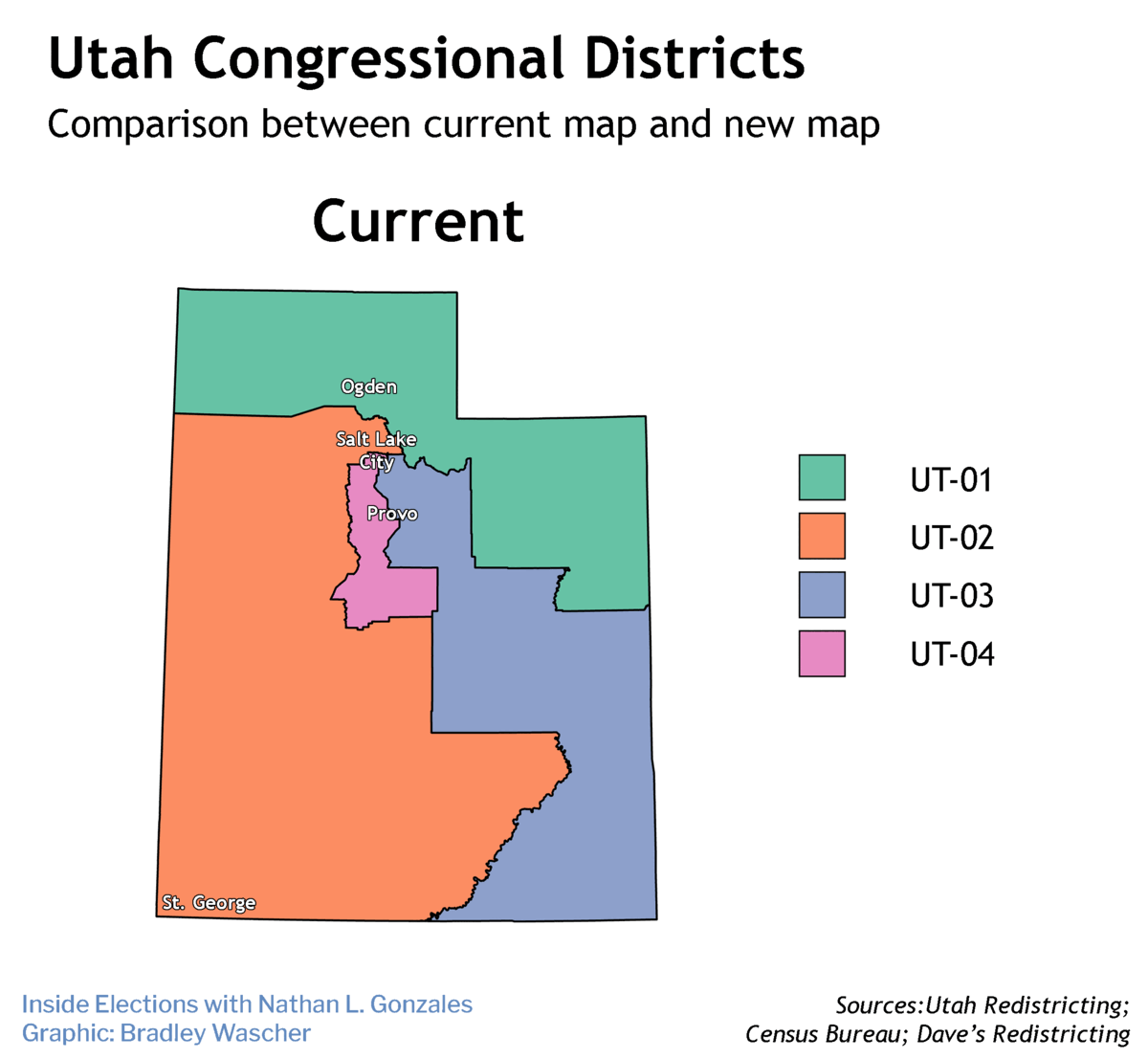Utah is one of the most Republican states in the union, but it has long had one competitive congressional district centered on Salt Lake City.
No longer. The new map passed by the Republican state legislature and signed by Gov. Spencer Cox, also a Republican, splits Salt Lake County between all four of the state’s districts and diffuses what little voting power Utah’s Democrats held over the past decade.
Utah’s redistricting process was not a smooth one. In 2018, voters passed a referendum creating an independent redistricting commission that would take over responsibility for drawing the new congressional map from the state legislature. But the next year, the state legislature effectively neutered the commission via statute, making it advisory and shifting final mapmaking control back to the legislature.
While the commission still produced several maps — most of which kept a competitive Salt Lake district — the legislature ignored those proposals in favor of its own.
As a result the 4th District becomes much more Republican, foreclosing any Democratic opportunity in the Beehive State.
Any competition in Utah next year will be for the Republican nominations in districts. Utah has a hybrid convention-primary system for selecting nominees; if no candidate wins 60 percent at a nominating convention, the top two candidates progress to a primary, and candidates can also qualify directly for the primary by gathering signatures.

1st District
The new 1st is more compact than its predecessor, as it sheds its eastern portions: all of Duchesne, Uintah, and Daggett counties and most of Summit County. To compensate, the district reaches into Salt Lake County’s northeast quadrant.
As a result, the district becomes more Democratic. Under the old lines it voted for President Donald...

